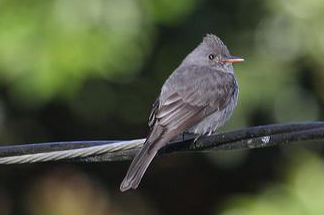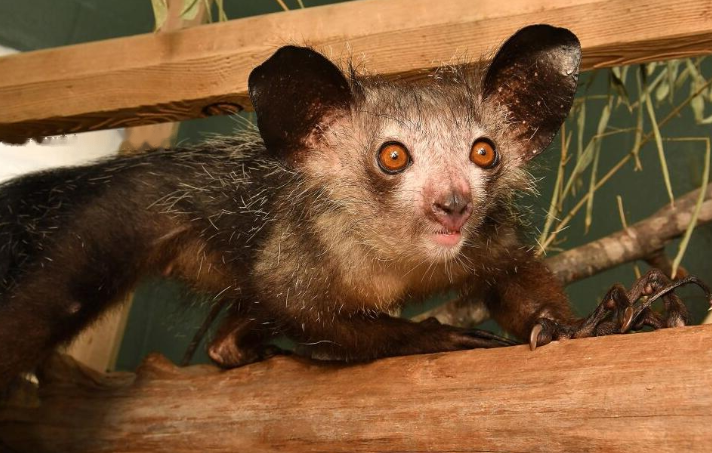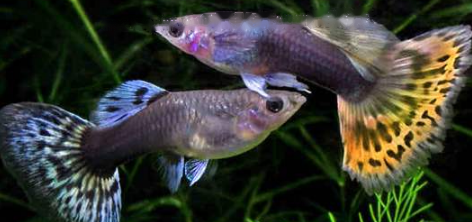In the sea it is the overlord of venomous snakes. On land, it is also more poisonous than the king cobra. It is the gray-blue flat-tailed sea snake. Do you think it is a very dangerous poisonous snake? Actually not. Although it is highly poisonous, it has a very gentle personality. Today, let Xiaobian introduce you to the only sea snake among the top ten poisonous snakes - the gray-blue flat-tailed sea snake!
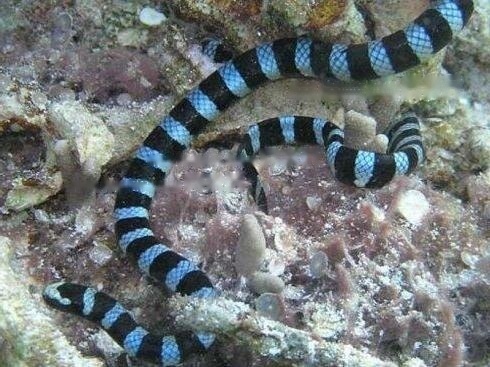
I. Basic information
[Chinese name]Grey-blue flat-tailed sea snake
[Latin name]Laticauda colubrina
[Another name]Grey Sea snake, fire snake, Banded sea krait
【Kingdom】Animal Kingdom
【Door】Chordates
【Class】Reptiles
【Order】Scaly
【Suborder】Snakes Suborder
【Family】Cobraidae
【Subfamily】Flat-tailed Sea Snakes
【Genus】Flat-tailed Sea Snakes
【Species】Grey-blue Flat-tailed Sea Snakes
【Distribution Area】 From the Indian Ocean to the Pacific Ocean
【Name and Date】Schneider, 1799
Second, Morphological Characteristics
The back of the gray-blue flat-tailed sea snake is gray-blue, and the abdomen is gray-yellow. There are blue and black rings all over the body. It has a body length of 75 to 360 centimeters and a weight of 600 to 1800 grams. Females are larger and heavier than males.
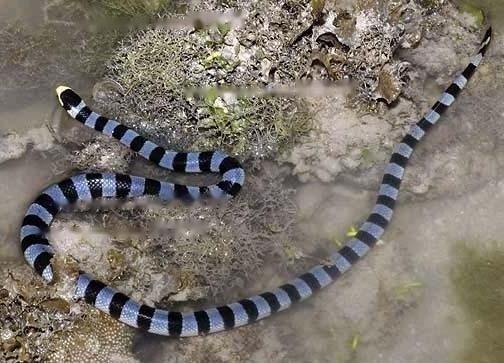
III. Geographical distribution
The gray-blue flat-tailed sea snake has a wide distribution range, mainly in Shandong, Jiangsu, Zhejiang, Fujian, Guangdong, Guangxi. , Hainan Island and Taiwan and other places, also distributed in American Samoa, Fiji, Japan, Malaysia, Myanmar, Thailand and other countries.
IV. Habitat
Grey-blue flat-tailed sea snake lives in tropical climate waters and coastal waters, including coral islands, coral reefs, mangroves and other areas, and often appears in the cracks on the shores of small islands Or shallow waters 0 to 10 meters deep under rocks.
V. Living habits
Grey-blue flat-tailed sea snakes are good at swimming. They spend most of their time in the sea, but they also spend 25% to 50% of their time on land. Mating, spawning, digesting food and molting. The main activity time of the gray-blue sea snake is at night or dusk, and they periodically change their temperature from shaded to sunlit areas. The grey-blue flat-tailed sea snake has the ability to climb trees and phototaxis. They locate and identify their prey by smell. They mainly feed on small fish.
Popular science of the gray-blue flat-tailed sea snake, a mild-mannered sea and land poisonous snake, are you sure you want to come and have a look?
VI. Toxicity and Harm
1. Toxicity
The venomous sea snake is one of the best among venomous snakes. After it attacks its prey, The toxin released at one time is ten times that of a king cobra, and it is an extremely strong neurotoxin.
2. Hazards
Although the gray-blue flat-tailed sea snakes are very venomous, they rarely attack humans, and their mouths are relatively small, and they are not easy to bite people. The character is also gentler and less dangerous.
VII. Protection level
The gray-blue flat-tailed sea snake is widely distributed, and its population is relatively stable, with no significant population decline. Therefore, the gray-blue flat-tailed sea snake was included in the 2010 IUCN Red List of Threatened Species ver 3.1 - Least Concern (LC).
Through the introduction of the editor, you must know more about the gray-blue flat-tailed sea snake. Although they are gentle, if you encounter it at the beach, don't provoke it. If you have anything to say, welcome to share and discuss below~
![[Original] Sharing of popular science knowledge of ringed map turtles](/static/img/11249/11249_1.jpg)



